The RV Thermostat is used to control your RV furnace and RV air conditioner.
An RV Thermostat is not perfectly the same as a residential thermostat targeted for sticks and bricks houses.
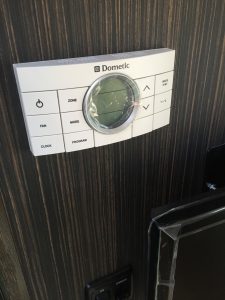

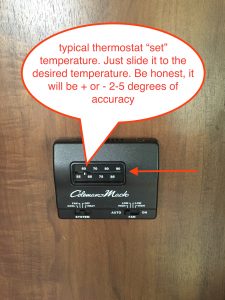
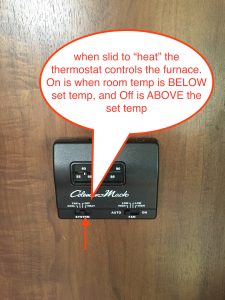
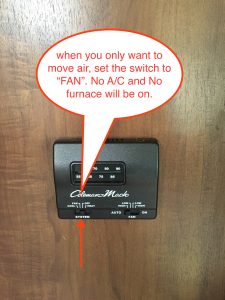
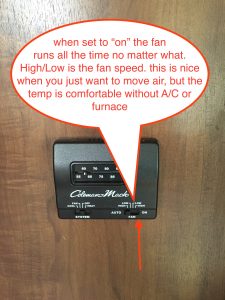
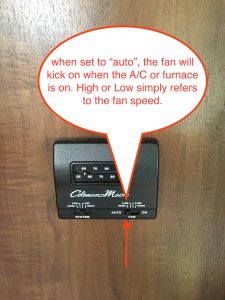
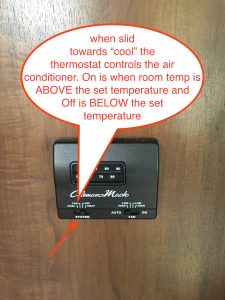
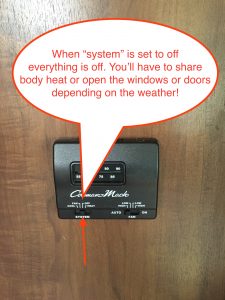

The rv thermostat is something that could save you money and is really very under-appreciated. Improvements that could make a big difference are things like timers and programs so that when you are gone the thermostat does the right thing and keeps things turned off. But when you are in your RV it turns on the climate control.
RV52.com has written a few articles on the Thermostat that you might find useful:
- From my book – The Fifth Wheel RV – The Interior – an overview article on the thermostat
- Why your RV feels hotter than it really is
- Why does my air conditioner turn off when I turn ON the lights?
- Notes on our air conditioner
Here is a basic overview on how an RV thermostat (or any other for that matter works)
When you set the temperature or setpoint for a thermostat and tell it that is it either cooling or heating more goes on in the background than you might think.
RV Cooling
When set for cooling and you set a desired temperature (the setpoint) you are telling the thermostat “Please Mr. Thermostat, do not let it get any hotter than the setpoint in my RV (technically not true – read next paragraph).
Well, actually, an important note here is that the thermostat only knows how hot it is at the thermostat. Sheri and I have on many occasions used a fan to circulate the air in our RV and our house to get a more uniform temperature.
The setpoint is not what you think either. For example, lets say you set the thermostat to 72 degrees F and cool. What the thermostat will do is to cool the RV to 72.
When it decides to turn on again, it allows the temperature to raise to 73 before it turns on again. Different thermostats may change this slightly, but the point is that there might be a degree or two difference. Why? Because if there was not a bit of a difference the air conditioner would be turning on and off too fast. That is very hard on air conditioners.
Also, thermostats also know not to turn off->then->on air conditioners (or furnaces) faster than, say 10 minutes. This is so that the cooling unit is not damaged.
So you see the thermostat is more complex than you might think.
RV Heating
Mostly this is the opposite of the cooling cycle.
If you set the thermostat for 72 degrees and have the Heat/Cool switch moved to Heat the thermostat will control the furnace. This temperature setting is often times called the setpoint.
In both modes, the thermostat knows when to turn on the fan too. And it does this in a smart way. You get this “smart fan control” by setting the thermostat fan control to “auto”.
When the temperature in the RV falls BELOW the setpoint, by say, at least a degree or more, then the thermostat will take steps to start the furnace. Eventually the furnace will start, then the fan will turn on and the RV will warm up.
When the temperature in the RV goes ABOVE the setpoint, by at least a degree or so, then the thermostat will tell the furnace to turn off.
And it goes over and over again.
How is an RV Thermostat different from a normal home thermostat?
In your home thermostat, it gets its power from a small transformer which provides 24 volts to the thermostat.
In an RV, 24 volts would be really inconvenient to provide, particularly when the RV is running off of a battery.
…a 12 volt battery. You know, like the battery your RV power converter keeps charged. (This is a whole topic – actually layers and layers of topics – RV power converter, RV battery, RV electrical systems, etc.)
So the obvious difference is that the RV thermostat runs off of 12 volts instead of 24 volts. I’m sure there are other small differences but this is the biggest one that I am aware. One other difference is that RV thermostats have a high low fan speed.
If you INSIST on buying a thermostat from Lowes or Home Depot you must ask if the thermostat can run off of its own batteries OR 24 Volt that gets supplied to most home thermosats. You can use the battery operated thermostat, but not the 24Volt operated thermostat. Given the ease of ordering online in our modern world, I don’t think it is worth trying to make a home thermostat work in an RV.
There are multiple RV Thermostat configurations
Furnace Thermostat on wall + RV Air Conditioner Thermostat built into ceiling unit
In this case, the RV Air Conditioner thermostat is located in the ceiling unit. This ceiling unit is sometimes called the plenum or air distribution box (ADB).
This is a lower cost configuration because the RV manufacturer doesn’t need to plan wiring for the air conditioner controls. When you are selecting an RV air conditioner you need to be aware if you need a ceiling unit with the thermostat built in or not.
The thermostat for your RV will be a little simpler – no heat/cool switch.
Our Tiny Texas Tumbleweed is configured this way. The TTT is very small (and cheap) RV.
Furnace and RV Air Conditioner Thermostat on wall
In this case the the RV air conditioner *AND* the RV furnace are controlled by the same thermostat. Your thermostat should have heat and cool switch.
Our 399BHS had this wall type of rv thermostat wiring. It is very common except for the smallest of RVs. See the wiring diagram below to get a really good idea of how these thermostats are wired.
I DO BELIEVE, but haven’t personally done it… that you could use a heat/cool thermostat with ONLY a furnace. It just wouldn’t do anything when on cool.
MOUNTING NOTE: If avoidable, I would NOT locate a thermostat on an outside wall on an RV if I could help it due to radiated heat. But most don’t do this so you’ll probably always be OK.
Thermostat Users Manuals:
- dometic rv thermostat single zone operating instructions
- AirXcel RVP Products RV Thermostat Multiple Zone Users Manual
- Dometic RV Thermostat Comfort Control Center 2 Users Guide Owners Manual
- Suburban RV Thermostat Heating Only 161154 161138 Users Manual Instructions Owners Guide
- Atwood hydroflame 1H2C Digital Thermostat for RV
- Atwood hydroflame 2H2C Digital Thermostat for RV
RV52.com ONLINE INSTANT RV Mechanic if you need help NOW!
ATTN RVers: RV52.com has found ONLINE RV mechanics with JustAnswer, one of internet's trusted "paid" answers site. Sometimes you just need the answer NOW and from a real mechanic.
RV Thermostat Wiring Diagram
42 Search Results for RV Air Conditioner Thermostat
Search Results
Need Help?
 24/7 Help
24/7 Help


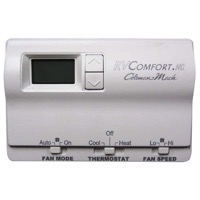
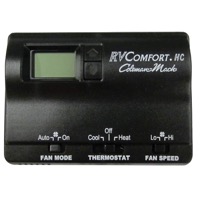
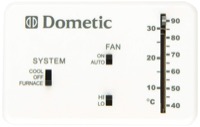
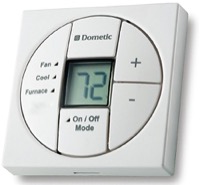
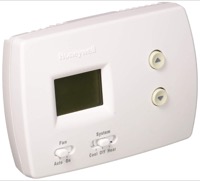
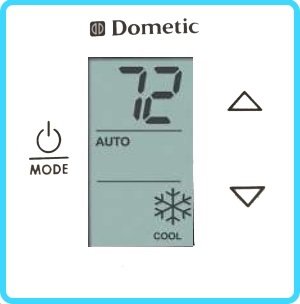
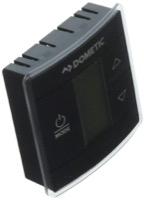
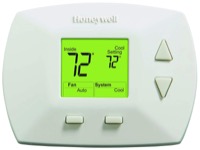
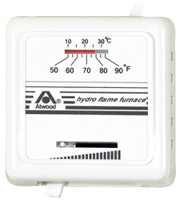
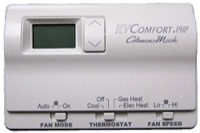
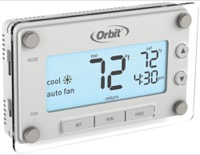

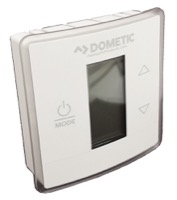
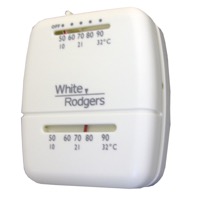
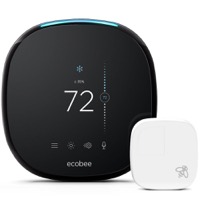
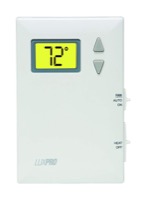


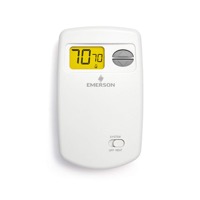
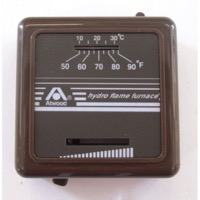
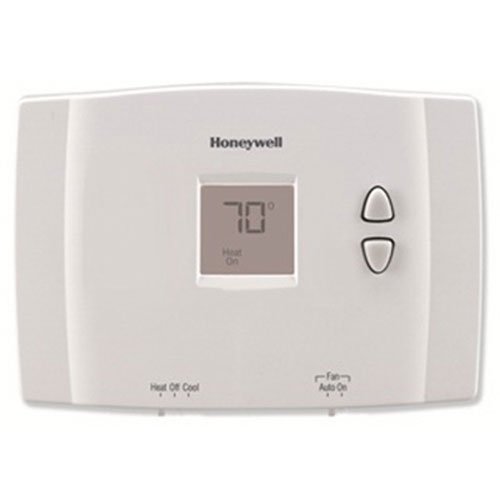
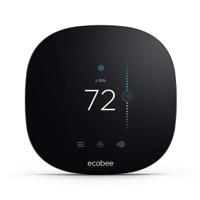
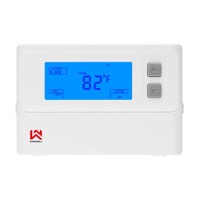
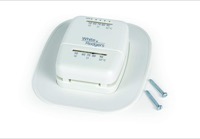
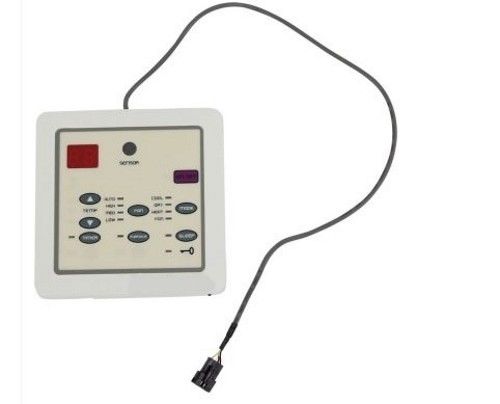
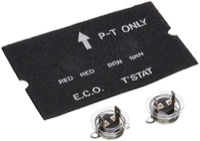
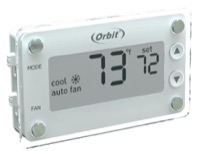
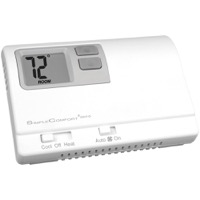
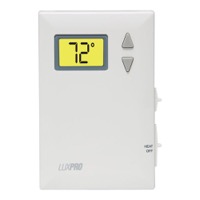
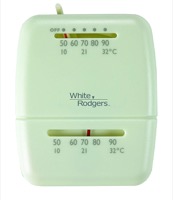
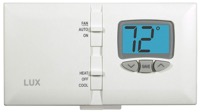
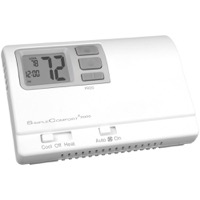
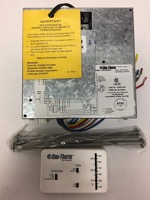
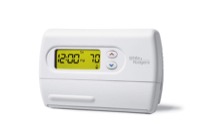
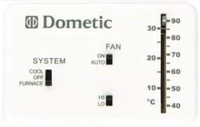

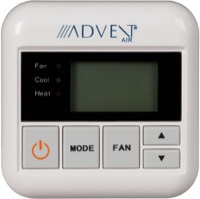
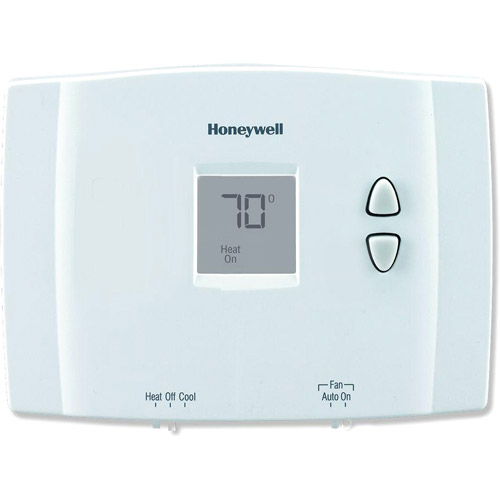
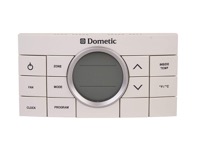
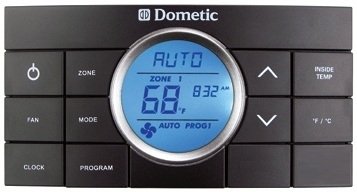
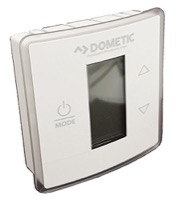
William Dyer says
Yes thanks for providing so much good information about the options regarding different
Manufacturers and replacement or upgrades.
I am new to trailers and rvs. This site is making me feel optimistic about repairs I can do myself.
I have a forest river Sierra sport T21 ’03 that I have not yet located the thermostat and a strong possibility it is entirely gone! I have contacted forest river and their owners manual are so general and for newer rigs. I was told this was the best they could do. Really ? I am thinking of removing the heater and tracing wiring back to see where it goes.
So my search goes on. I will bookmark this site and when I get a clear picture of what I have to do I will come back to this site for parts and how to’s! Been very helpful so far.
Thanks
Marlan at Rv52 says
William – I bet your thermostat is part of the ceiling unit – also called the plenum. Do you have an on/off switch on your ceiling unit and another dial that controls the level of coolness (like with red and blue arrows or swooshes). The on/off switch may have cool low, cool high, air only and maybe some other statements? If it does, then that IS your thermostat.
Natalie Roberts says
Thanks for you great information! But recently my rv thermostat the temperature felt cannot be sustained/ often changes drastically. What is your opinion give me? Thanks again.
Marlan at Rv52 says
Thermostats are really simple things. By not sustaining or changing rapidly, I”m going to GUESS that you are seeing your AC not keep things cool. Maybe your AC needs refrigerant or the compressor in the AC has gone bad. Can you hear it start up and control the AC? Can you hear the compressor turn on – which is a distinctly different sound than just the fan?